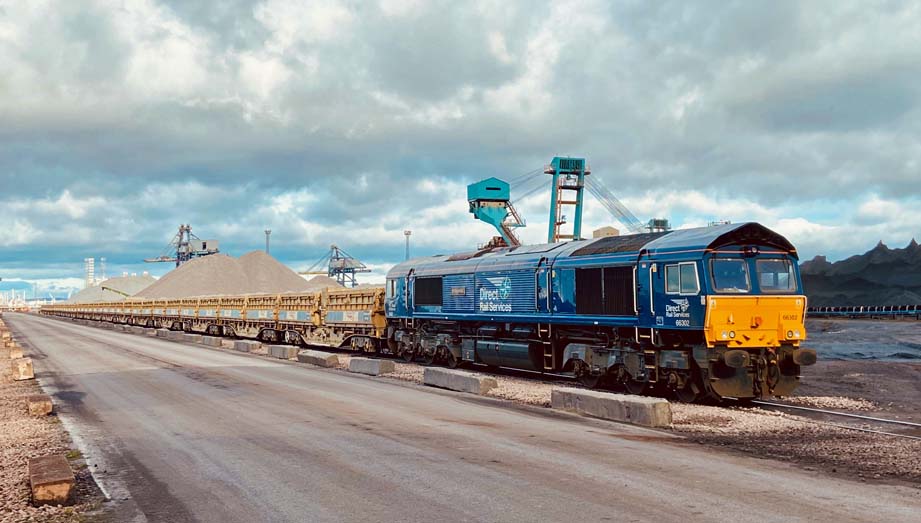

If we are to provide a serious response to the present climate emergency there will have to be behavioural change, not only by customers, but also by providers of transport services.
The Chartered Institute of Logistics and Transport was fascinated to hear from Karl Watts, chief executive of new kid on the track, the Rail Operations Group (ROG), about a big new opportunity for rail freight to raise its game.
Karl recalled how, back in BR days, in addition to passenger and freight trains, there were also those that ran for the civil engineer, who looked after the permanent way, and for the mechanical and electrical engineers who cared for the fleet.
With privatization, passengers became conveyed by franchises, and freight was to be the preserve of Freight Operating Companies (FOCs), which also provided services for infrastructure contractors and Network Rail.
They picked up fleet movements for the rolling stock companies as well, but gradually found that this was a specialism too far.
Accordingly there was a universal welcome to the suggestion that a separate business should be dedicated to such activity, and thus the Rail Operations Group (ROG) was born.
Privatization has made the running of trains increasingly complex because with the loss of an overarching authority, standardization has gone.
The most favoured kind of automatic coupling, the Dellner, is but one of nine, and even then comes in two different sizes.
Brakes may be mechanical or electrical, and gauging is a nightmare, which needs a full analysis if full account is to be had of legacy issues, particularly as regards compatibility between train body shells and platforms.
Only on recently-electrified routes may electrification be UIC-compliant, which poses a particular danger since current returned through the pantograph can interfere with the signalling.
Thus a specialist train operator may be very necessary to guide one-off train movements through this minefield of complexity.
Since the banking crisis a decade ago, the cost of borrowing has come down, making it attractive for new franchisees to pledge fleet renewal and drawing new manufacturers like CAF and Stadler into the British rolling stock market.
ROG has never needed to advertise its services, but by proving its worth has steadily taken work off the FOCs, whose unreconstructed haulage methods put expensive new kit at risk, for example, new trains being hauled un-braked, or a consist comprising 22 barrier vehicles being needed to haul a nine car new train at a modest 45 mph, a bit like delivering a new Bentley by horse and cart.
ROG has been able to modernize by addressing compatibility issues so that even an ancient Class 37s, when fitted with Dellners and electric brakes, can run at 95 mph.
As well as achieving mileage accumulation of new trains, ROG can test new infrastructure up to the maximum permitted line speed.
Only by being a specialist in this field can ROG keep up to date on route learning and maintaining knowledge across 40 or 50 traction types, and as a career railwayman Karl has been able to bring to the table expertise acquired in working on franchise bids.
Most of the new build is to replace existing fleets, with only one-third of the 7,500 vehicles now entering service being to increase capacity.
However, only 15 percent of the displaced vehicles, such as the old Class 313/4/5 types, are life-expired and thus fit for recycling.
The rest possess residual value, which means that their owners, the rolling stock companies, want them kept in warm storage pending identification of a new customer.
It is the role of ROG subsidiary Traxion to create and maintain yards at places like Crewe, Castle Donington, and Gascoigne Wood, where conditions may protect against the risk of the asset rapidly deteriorating.
The third ROG business, Orion is not yet a trading company, but seeks to address the the decline of traditional heavy industry, which has left rail freight with 9 percent of the market, competing with lighter and faster passenger trains for increasingly scarce network capacity.
E-commerce is seeing a surge in white vans making online deliveries, so the availability of redundant but not life-expired passenger trains provides an opportunity for re-purposing while retaining 100 mph running which will be seen when former Class 319 units owned by Porterbrook commence a new life as bi-mode Class 769s with decluttered interiors carrying roller cages hired to operate a route thrice-daily, carrying small freight non-stop between London Gateway and London Liverpool Street.
With last-mile deliveries by autonomous vehicles, these new services will help logistics companies deal with the threat posed by ultra-low emission zones.
ROG has to start with the older assets now available, but will need to move with the times if it is to keep pace with environmental opportunity while gaining access to the fast lines that may be possible only with 110 mph running.
An order of ten high-speed new tri-mode Class 93 locomotives from Stadler will enable it to make optimal use of the non-electrified single track branch that links Britain's busiest container port at Felixstowe to the rest of the network, which is already being upgraded with new curves and grade separated junctions to speed trains to the west and north.
CILT was joined for Karl's presentation by one of ROG's Scottish team, Galashiels-based Andrew Wylde, son of transport author John Wylde.
Much of Andrew's workload currently consists of driving ScotRail Inter7City power cars to and from Loughborough for refurbishment by Wabtec, and collecting refurbished carriages from Doncaster.
So ROG is already helping to usher in a new era on Scotland's railways and it sounds as though the flexibility its approach can offer will be needed if rail freight is to recapture market share.
John Yellowlees.
(because there was no image with original article)
*2. Original news article image replaced.
(usually because it's been seen before)
under the provision in Section 29
of the Canadian Copyright
Modernization Act.









